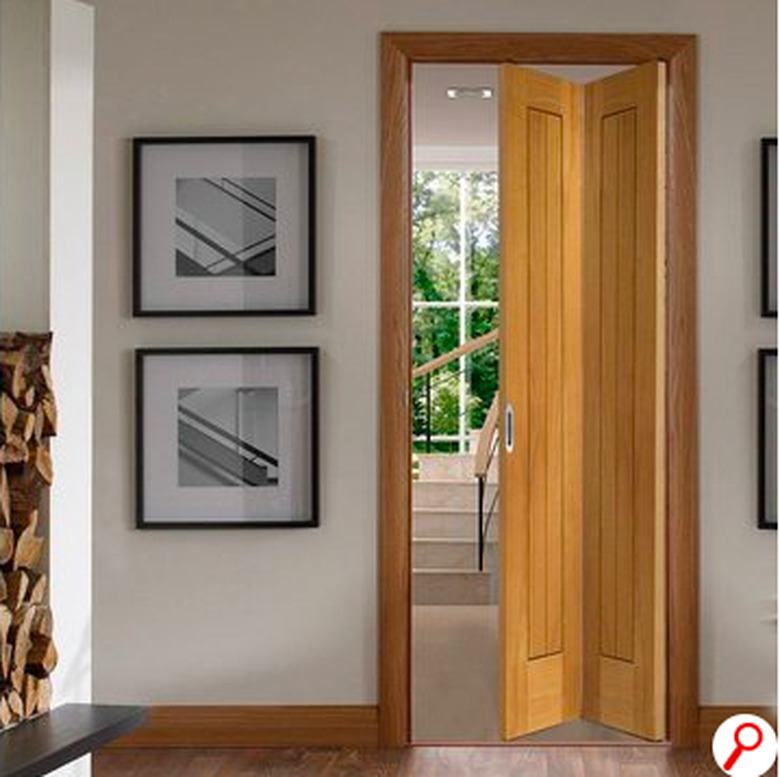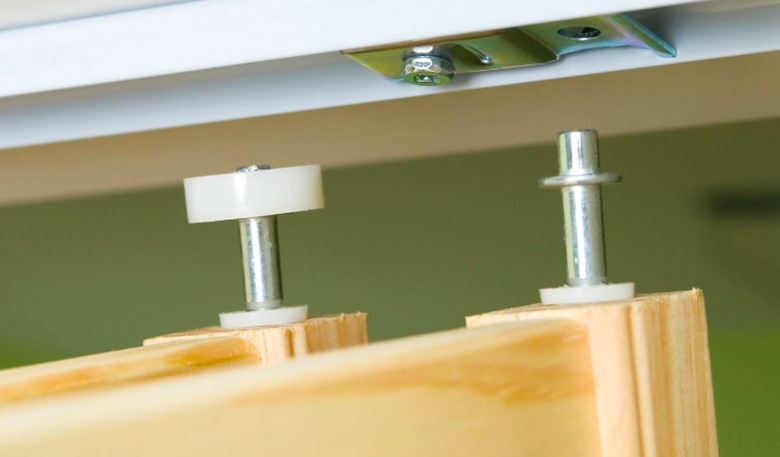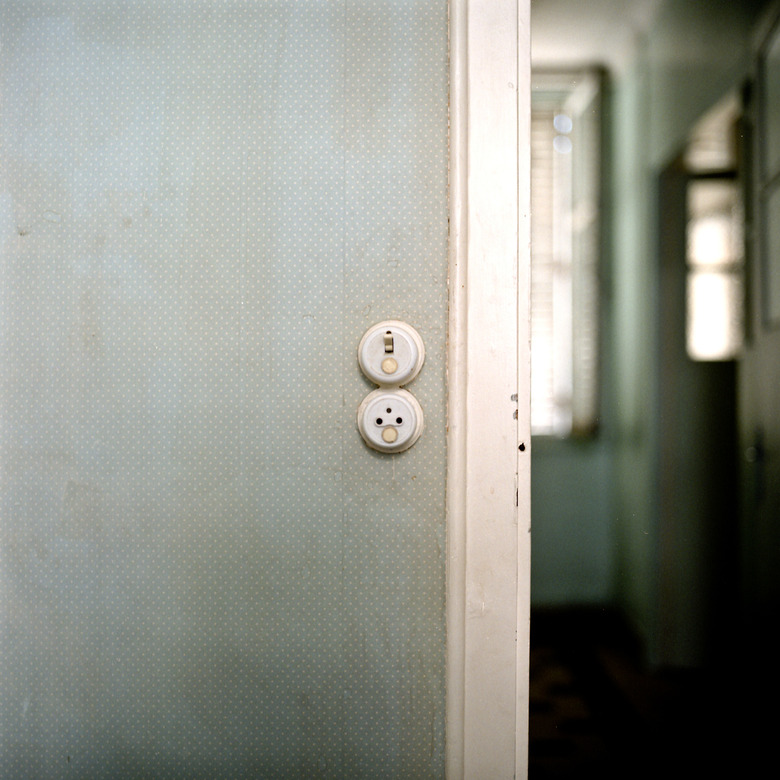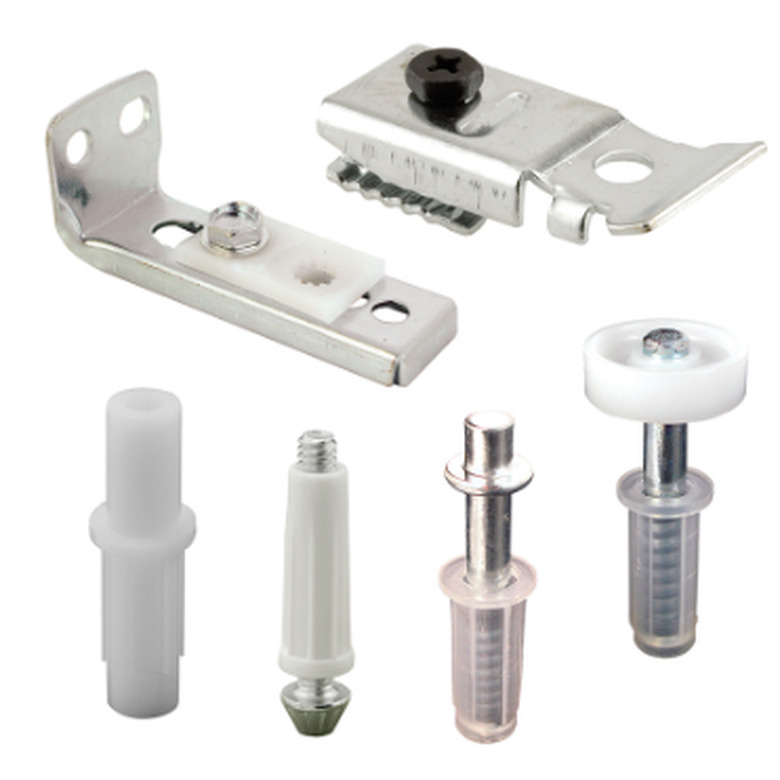Bifold Door Repairs: How To Troubleshoot And Fix Bifold Closet Doors
Bi-fold doors are among the simplest of doors to install, and because they save space, they are a popular choice for bedroom closets. A typical bi-fold set consists of two doors, each with a pair of hinged panels, installed in a double-wide closet opening. Nothing stops you from installing a single bi-fold in a smaller opening, however, and many homeowners do just that.
A two-panel bi-fold door pivots on pins installed in the corners of the door panel nearest the side jamb, while a guide installed on the top corner of the other panel slides along a track installed in the head jamb. The hinges connecting the two panels allow the panels to fold together like an accordion when you open the door. When two doors occupy a double-wide opening, they should have a gap of about 1/2 inch between them when they are closed. A single-wide bi-fold door should form this gap with the side jamb opposite the pivot side.
The most common issues with bi-fold doors result from misalignment, and that's usually because the doors have slipped, or the pivot pins or guides have come loose, or the wood has split.
How a Bi-Fold Door Works
How a Bi-Fold Door Works
Every bi-fold door comes with a hardware package, and while the hardware may be model specific, you can often make repairs with generic parts. The parts are usually made at least partially of plastic and are inexpensive.
The door pivots on a fixed pin installed on the bottom corner of one of the panels, and this, along with a spring-loaded pin installed on the top corner of the same side, holds the door in place. Both pins require brackets which must be screwed to the head jamb and floor or side jamb during installation. The bottom bracket is often notched, which allows you to change the angle of the door relative to the jamb.
The guide that holds the opposite corner of the outer panel to the head track is often just a spring-loaded plastic wheel attached to a pin that fits into a pre-drilled hole. The head track is metal and is molded to hold the guide. When you install the door, you retract the top pivot pin to set the door on the pivot brackets, then you release the pin and allow it to pop up into the track.
Straightening a Leaning Bi-Fold Door
Straightening a Leaning Bi-Fold Door
When a bi-fold door leans, the door may be difficult to open or close, and the guide tends to slip out of the head track. This is usually easy to fix. Start by resetting the guide inside the track if it has come out, then close the door and check the gap between the edge of the door and the track. If the gap isn't the same at the top and bottom of the door, the bottom pivot needs to be realigned.
One way to do this is to lift the door and move the bottom pin to a new notch if the bottom bracket is notched. If there are no notches in the bracket, you'll have to take down the door, loosen the screw on the bottom bracket to slide the horizontal part of the bracket, and move the pivot hold to a new position. This is a trial-and-error procedure, and you can often accomplish the same goal with less effort by loosening the screw holding the top pivot to the track and sliding that bracket instead.
Dealing with Carpet Scraping
Dealing with Carpet Scraping
Shag carpeting has a way of rubbing against the bottom of bi-fold doors and making them difficult to open and close. The most obvious remedy for this is to raise the door, which you can often do by rotating the bottom pivot pin counterclockwise. Not all pins have threads, though, so an alternative is to raise the bracket that holds the pin. You can do this by putting shims under the bracket if it's attached to the floor. If the bracket is attached to the side jamb, unscrew it and screw it back in place about a quarter inch higher.
But if the gap between the top of the door and the header is less than 1/2 inch, you don't have enough room to raise the door, so there's not much else to do but to trim a small amount—about 3/8 inch—off the bottom of the door. To do this, take the door down and lay it front-side down on a workbench. Draw a line with a straightedge and pencil, then trim the door with a circular saw. To avoid chipping of the door's veneer, apply masking tape on the bottom edge, draw the line on the tape and cut through the tape.
Repairing Cracked Wood
Repairing Cracked Wood
Bi-fold doors are made of lightweight materials, and sometimes the wood cracks around the one or both of the pivot pins. The door leans when this happens, and you won't be able to straighten it until you fix the cracks. You can do this with carpenter's glue and a C-clamp.
- Take down the door and pry the pivot out of the door edge with a flat-head screwdriver or pliers.
- Spread the crack slightly with the screwdriver and spread carpenter's glue with a toothpick.
- Close the wood with a C-clamp and leave the clamp on for 3 to 4 hours.
- Tap the pin back in the hole with a hammer and mount the door in its brackets.
- If the pin is itself damaged or loose, replace it with a new one.



